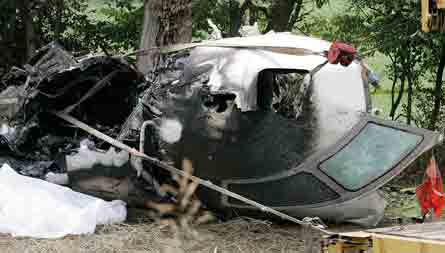Recommendation advises crew to cross-check aircraft's location before take-off
The US National Transportation Safety Board is calling on the Federal Aviation Administration to mandate improved pre-take-off situational awareness checks for pilots, in the aftermath of the 27 August crash of a Comair Bombardier CRJ in Kentucky.
The accident occurred at Blue Grass airport, Lexington, when the pilots attempted to take off from runway 26, a 1,070m (3,500ft) general aviation runway, rather than runway 22, a 2,140m strip. The aircraft failed to become airborne at the runway's end, crashing into a perimeter fence and trees. Of the 47 passengers and three crew, only the first officer survived.
In a 12 December safety recommendation, the NTSB asked the FAA to require operators to establish procedures "requiring all crew members on the flightdeck to positively confirm and cross-check the airplane's location at the assigned departure runway before crossing the hold-short line for take-off." It also wants airlines to provide guidance to pilots on runway lighting requirements for night take-offs.
Although the Comair flight departed before sunrise, the pilots noticed, but did not react to, the fact that there were no edge lights on the runway - a required feature for night operations at the airport.
The board notes that despite several earlier FAA recommendations on runway situational awareness, standard operating procedures from airline to airline continue to vary widely, as implementation of recommendations is not mandatory.
At the time of the Kentucky accident, Comair "did not have any written procedures specific to runway identification before takeoff", the letter says.
Other airlines questioned said they required pilots to state the runway number and receive a verifying response from the other pilot before take-off.
|
|---|
| The CRJ failed to take off from a short runway and crashed into trees |
Source: Flight International
























